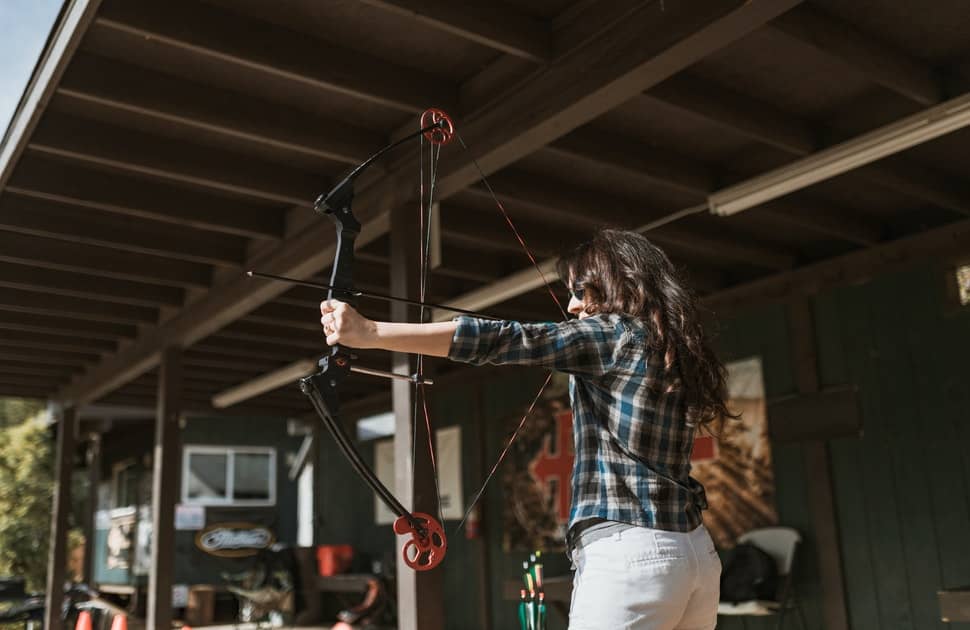How To Tune A Bow In 11 Easy Steps
Ever heard a bowhunter saying their bows need tuning?
A bow may shoot fast, point well, and look pretty, but if the arrow it launches doesn’t fly true and straight, everything else doesn’t matter. As a hunter, you’d want your arrows to move straight, cut efficiently, and carry as much energy as possible.
You’d also want your bow to hold well and be a little forgiving and accurate. In general, you’d want to hit the target every time you shoot an arrow. If you can’t shoot your targets and the bow is the issue, then you must tune it. Tuning a bow is something you can do on your own. You don’t need to take your bow to a pro shop.
Here are the eleven steps you can follow to tune your bow:
Contents
1. Evaluate The Cables and the String
When preparing yourself for a new hunting season, the first things to check are the bow cables and string. These components stretch and deteriorate over time, resulting in de-flexed limbs, shifted nocking, and rotated cams. These irregularities may cause a dangerous shooting.
Cables and strings will wear out as you use them and may need replacement. Normally, strings have a lifespan of between 3 to 4 years, after which they must be replaced. If you have to replace them, get new ones from a reliable supplier.
2. Twist and Press
If your cables and strings are 2 -3 years old, you’ll not need to replace them. The only problem they may have is that they might have overstretched, causing the cams to rotate. If this is the case, your bow will have some timing problems.
The nocking point may also shift, and the sight peep. Twisting and pressing the string and cables would be necessary to bring the bow back to the factory specifications.
3. Draw Length
About 70% of archers use bows that are slightly longer for their body size. All shooters require some extra length to allow for the best draw length for an excellent speed.
However, when you use a bow that’s too long, you’ll have problems with your shooting. Before you pick a bow, make sure it is of the correct size for you so you can get a perfect draw length. Also, pick the correct arrow size for your bow.
4. Center Shot
Once you’re satisfied with the cables, string, and draw length, the next step is to align your arrow rest and nocking point. This process is referred to as finding the center shot. You can either use a bow square or a laser center-shot tool for this work.
Using the laser tool is intricate, and that explains why many shooters prefer using the bow square. The bow square will help you get your arrow rest and nocking point aligned in no time.
5. Aligning the Peep
It is necessary to tune your peep so you don’t bend your neck too much while looking through the peep sight. You might realize that setting the peep a little higher (or a little lower) may reduce the strain on your neck and improve your shooting.
Try moving the peep upward and downward to find where you are most comfortable. That’s where it should be served in so it stays in position.
6. Arrow Spine
The arrow spine is its stiffness. Arrows with lower spine numbers are stiffer than those with higher spine numbers. For example, 340-spine arrows are less flexible than 400-spine arrows. All the arrows you shoot will flex slightly when leaving the bow before they recover as they move to the target.
Slow bows work best with flexible spines, while faster bows do well with more rigid spines. There are spine calculators you can use to find the best arrows for your bow. These calculators are available on arrow manufacturers’ websites. Some manufacturers also have software that helps them determine perfect arrow spines.
7. Fletching
In the recent past, arrows were fletched with long vanes or feathers. This gave them a good flight, more so because of their battleful helical arrangements and broadheads. Today, stiff short vanes have replaced the long vanes and feathers.
These stiff vanes provide better guidance for the arrows. They are also rigid enough, meaning you can shoot repeatedly without your arrows losing their usefulness. Check your arrow vanes to make sure they are still in good shape.
8. Front of Center
An arrow will have a perfect flight if it’s more massive at its Front of Center. It is recommended that an arrow’s F.O.C. should be between seven to eleven percent. To determine this figure, first balance the arrow horizontally, then measure the distance between the nock grove and the balancing point.
Next, subtract half the length of the arrow from this distance. Express the answer you get as a percentage of the overall length of the arrow. If your arrow’s F.O.C. doesn’t fall between 7 - 11%, some tuning will be necessary.
9. Spin Test and Weigh the Arrows
Before you shoot your arrows, spin test and weigh them. You’d want all the arrows to have the same weight for consistency. Spin testing is necessary to determine whether the arrows are straight. Roll an arrow on a flat surface and check for any wobbling.
10. Paper Tune
Paper-tuning is the best way to double-check the center-shot to make sure your arrows don’t have any issues. If you believe you’ve everything set, a paper-tune would be necessary for confirmation. To paper-tune the bow, you’ll need a frame to hold the paper, some arrows, and your bow.
You’ll also need a target behind the paper to hold the shot arrow. Stand about 6 - 8 feet from the paper, then shoot your arrow through it. Observe the tear that results. If it’s a perfect hole, then your bow and arrow are well set. A perfect tear results only if your arrow spine, grip, cam timing, nocking point, and arrow rest are all correct.
11. Walk-Back Tune
A walk-back tune is necessary as a check that everything is okay. To carry out this tuning, set your target, then stick a tape vertically at its center. Mark a dot on top of the tape for your aiming. Stand at 20 yards and shoot.
Move back to 25 yards and shoot again. Do the same for 30, 40, 45, and 50 yards. Ideally, your arrows should strike progressively lower but on the same vertical line. If the arrows seem to move progressively to one side of the other, some rest adjustment would be necessary.
Final Words
As you can see, tuning your bow involves a lot. A pro can do it for you, but it is recommended you do it yourself for the best results. If anything, you are the one who will use the bow. Don’t forget to check out our latest review on best recurve bow for hunting.

